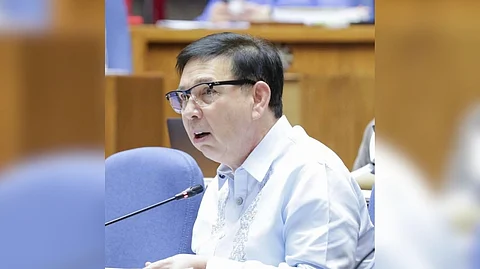
- NEWS
- the EDIT
- COMMENTARY
- BUSINESS
- LIFE
- SHOW
- ACTION
- GLOBAL GOALS
- SNAPS
- DYARYO TIRADA
- MORE

Department of Finance (DoF)Secretary Ralph Recto on Monday urged lawmakers to exercise fiscal discipline during deliberations on the 2026 national budget, stressing that government spending must strictly adhere to the refined Medium-Term Fiscal Program (MTFP) to ensure every peso of taxpayer money is used efficiently.
“Let us operate within the parameters of the Medium-Term Fiscal Program that reduces our deficit and debt gradually, creates jobs, increases income, and decreases poverty,” Recto told members of the House Committee on Appropriations during the Development Budget Coordination Committee (DBCC) briefing on the 2026 General Appropriations Act.
Recto said the recalibrated fiscal framework, introduced in 2023 to make government targets more realistic and adaptive to external shocks, balances the need to sustain post-pandemic recovery while shielding the economy from global uncertainties such as geopolitical conflicts and trade tensions.
Revenue growth, reforms to fund fiscal targets
The Finance chief reported that revenues have been expanding steadily, with government collections rising by an average of 13.8 percent annually in the past three years. Tax collections have grown at 11.5 percent yearly, pushing the revenue effort to 16.7 percent in 2024.
From 2025 to 2028, tax revenues are projected to grow 10.2 percent annually, reaching nearly P6 trillion by the end of President Ferdinand Marcos Jr.’s term. By 2030, government revenues are expected to breach the P7-trillion mark, supported by tax reforms such as the VAT on Digital Services and the Capital Markets Efficiency Promotion Act.
To boost resources without raising new taxes, Recto said the DoF is maximizing non-tax revenues through higher remittances from government-owned and -controlled corporations and the privatization of idle state assets. At the same time, the Bureau of Internal Revenue and Bureau of Customs are intensifying digitalization and enforcement to plug tax leakages.
These measures, combined with tighter spending controls, have helped narrow the budget deficit from 8.6 percent of GDP at the height of the pandemic in 2021 to 5.5 percent in 2025, with a goal of further reducing it to about 3 percent by 2030.
Recto also warned lawmakers against wasteful appropriations, saying tax compliance depends heavily on how citizens perceive government spending.
“People are naturally resistant to taxes. But their tax obedience can be won if they will see how the taxes they paid are spent for the right things, at the right price, by the right agency, at the right time,” Recto said.
The Marcos administration continues to prioritize education, health, agriculture, infrastructure, and digital connectivity — sectors Recto described as “high multiplier” drivers of growth.
Despite inheriting P12.8 trillion in pandemic debt, Recto said the government has managed to strengthen its debt profile by relying mostly on long-term, fixed-rate domestic borrowings under an 80:20 mix in favor of local sources. This strategy, he noted, minimizes exposure to foreign exchange risks and ensures debt remains sustainable.
“Every peso we borrow is invested in productive projects that deliver real benefits to Filipinos. We will make sure that the economy will continue to outgrow the country’s debt,” he said.
With disciplined spending and sustained growth, the DoF projects the Philippine economy to expand to P42.6 trillion by 2030 while keeping debt at 58 percent of GDP.
Recent credit rating upgrades, Recto added, affirm international confidence in the country’s fiscal management.
Economic indicators have also shown improvement, with inflation easing to 0.9 percent in July and the labor market hitting record highs — 52.4 million Filipinos are now in the labor force, and unemployment continues to decline. Poverty incidence dropped to 15.5 percent in 2023, lifting 2.5 million Filipinos out of poverty.
Recto said the administration aims to reduce poverty further to 9 percent by 2028, freeing an additional eight million Filipinos from hardship.
“This is the be-all and end-all of all our efforts,” Recto said. “As this is the definitive indicator that our growth has translated into real improvements in the lives of Filipinos.”
